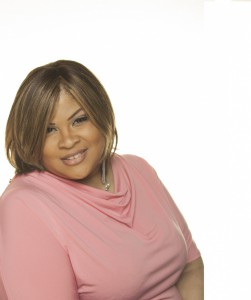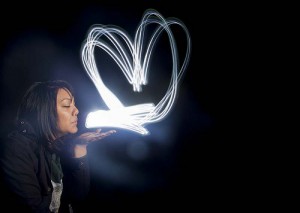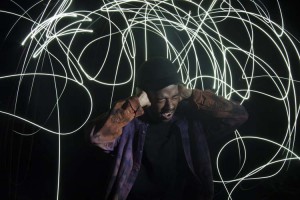 You would chose a portrait with main light, fill and background light when you want the shot to be focused and clear on yourself.
You would chose a portrait with main light, fill and background light when you want the shot to be focused and clear on yourself.
Aperture Gallery
Nancy Burson’s gallery: This gallery was one of my favorites because of the strangeness to all the images. The images were of animals faces mixed in with other types to make a weird mix of new animal. The whole gallery was very strange and interesting which l really enjoyed being there.
Matthew Pillsbury gallery :What really caught my attention was the use of long exposure time to create a transparency effect that make the City look like it has life and movement. The photos are all black and white. Also in one they use a low angle to make the object look huge.
Wijnandoo Deroo’s exhibit: The Gallery was very symmetrical throughout her work. Her work was mostly architecture of building and museums. All the work had a lot of strong vertical and horizontal lines. It looks like most of her images were all plan out and came out amazing.
The Marie Cosindas: This gallerys where mostly fogy and interesting. It had a lot of use of shadows which really brought out each image.
Reiner Gerritsen’s exhibition: This gallery reminded me of Matthew Pillsbury exhibition.They both had cityscapes and urban life. Gerritsen’s shot of the people riding the train was very interesting it showed the many faces that board the train. The gallery is a great representation of New York and its diversities.
 A portrait often shows a person looking directly photographer, in order to most successfully engage the subject with the viewer. This is a strong picture because of the lighting. The lighting helps to create a soft and glamorous feel. I almost feel like a news caster in this portrait.
A portrait often shows a person looking directly photographer, in order to most successfully engage the subject with the viewer. This is a strong picture because of the lighting. The lighting helps to create a soft and glamorous feel. I almost feel like a news caster in this portrait.
Aperture Gallery
Photographer, Mathew Pillsbury
Exhibit: City Stages
1)What types of photographs are in this exhibit? The photographer displayed black and white images that captured subjects in motion.
2)What is the photographer’s subject matter? The people in motion.The photographer usage of motion blur was amazing and intriguing to me. The images drew me in and made me wander how I could recreate such a masterful piece.
3)What is the photographer’s subject? The subjects are Life in motion and stolen moments. NYC fast paced everyday hustle and bustle.
4)How does the photographer achieve this? The long exposure time allows you to catch glimpses of people and motion and gives you a strong sense of movement in its stillness.
5)What are the main formal devices that the photographer uses? The photographer used varied techniques the ones that I felt that were repetitive were eye level point of view, high contrast, long shots, the rule of thirds and shallow depth of field.
Robert Mann Gallery, NYC
Photographer Wijnanda Deroo
Exhibit: Rijksmuseum
1)What types of photographs are in this exhibit? The photographer images were of open archways and unfinished spaces.
2)What is the photographer’s subject matter? The photographers subjects were structures that appeared to be under reconstruction.
3)What is the photographer’s subject? The renovation process of Holland’s national museum.
4)How does the photographer achieve this? The photographer documented the demolition, desolation, and reconstruction for a decade. The use of light was dim and dulling at times, yet the pastel colors create a warm undertone. What we see in the exhibit is the retransformation through Derros’ eyes.
5)What are the main formal devices that the photographer uses? The photographers used long shots and most of the photos composition were primarily symmetrical. There were a few which displayed many curves in the archways, Derros’ also displays a wide depth of field at eye level, with high and low contrast and strong vertical and horizontal lines.
Danzinger Gallery, NYC
Photographers Henri Cartier-Bresson & Robert Frank
The Heart and The Eye
1)What types of photographs are in this exhibit? These photographs are black and white taken between the mid 1930′s and 1940’s.
2)What is the photographer’s subject matter? These photographs displayed a lot of hard working people in their every day life.
3)What is the photographer’s subject? The photographers captured emotions of people in active and still images.
4)How does the photographer achieve this? Both photographers traveled a great deal to get their images. Henri Cartier-Brenson was more technical in a sense by taking pictures that thought of. Robert Frank photographs were more heartfelt and emotional because emotion gives his work meaning.
5)What are the main formal devices that the photographer uses? High contrast, rule of thirds, sharp, close up, and medium shot were all used.
Julie Saul Gallery
Photographers: Reinier Gerritsen, Adam Magyar and David Molander
Exhibit: Metro
1)What types of photographs are in this exhibit? Everyday life in transit.
2)What is the photographer’s subject matter? The photos illustrated tight spaces and open spaces, packed trains and busy streets.
3)What is the photographer’s subject? These photographs display our daily lives in transit to and from home, work and/or school. Some of these photos show people mentally distant from each other yet closely occupying their personal space. The intimacy or chaos in these photographs make you want to scrutinize them further.
4)How does the photographer achieve this? The compilation of different shots from the same scene added to the mood of the images.
5)What are the main formal devices that the photographer uses? There are some photographs in bird eye’s view and eye level. Another group of photos are filled with illusions, be being composed with a layered effect that gave it a feel of chaos.
Clamp Art, Gallery, NYC
Photographer Nancy Burson
Exhibit: Composites
1)What types of photographs are in this exhibit? Nancy Burson created computer-generated composite portraits in the late 1970s to early 1980s in collaboration with researchers at M.I.T. the Massachusetts Institute of Technology. Photographs that are distorted versions of digital photographs way before photoshop was even invented.
2)What is the photographer’s subject matter? The photographer has been interested in the relationship between science, art and humanity.
3)What is the photographer’s subject? The subjects were animals, there were a few celebrities and some political figures.
4)How does the photographer achieve this? Many of the portraits are black and white or sepia photographs with two or more images combined creating a single photograph.
5)What are the main formal devices that the photographer uses? The photographs are mostly close up portraits.
I like this photo because of the pose and lighting goes well together.The photographer capture the fighting essences of the model.The light makes it look like i have some kind of power to control the energy around me.
To take this photo, the shutter speed : 8, Av : f/8 and the ISO : 100. I really like the circle which made by light. The person is standing behind the circle.
It took four people to complete this image. Painting with light is pretty cool and fun. It almost seems as if the person controlling the light is invisible. The idea of this picture was a battle between two of my peers. Almost looks as if we had special powers. Two people posed while the other two people stood behind with a flashlight with a red and green filter and moved the flashlight near the hand continuously . Overall this is the best photo to me !
This was my personal best & favorite today. I like the expression and it fits well with the image created with the light source. I order to create this shot we would first shot the subject alone and once the flash went off, we had about 9 seconds to create the light source. It took a couple of takes but was able to convey our idea. 
 In this class photo shoot the subject sat in a chair as I created the appearance of blaring lights around him. The mood of the picture was to simulate overbearing noise or thoughts that are consuming the subject. This picture was created by using a tripod and a strobe light, the aperture was narrowed to allow for a greater depth of field. The image took ten seconds to create.
In this class photo shoot the subject sat in a chair as I created the appearance of blaring lights around him. The mood of the picture was to simulate overbearing noise or thoughts that are consuming the subject. This picture was created by using a tripod and a strobe light, the aperture was narrowed to allow for a greater depth of field. The image took ten seconds to create.
Today we are dealing with painting with light. When painting with light, it create the image more creative and enjoyable. This image is my favorite because of the consistency of the solid of the light around the body. In order to obtain this, we set our shutter speed to 10″ with the aperture of f11. This require another person. The 2nd person is standing behind the model with a flashlight. This image may look simple but it took a couple of shot to get it right. The outline of the body made this image look like a crime scene.